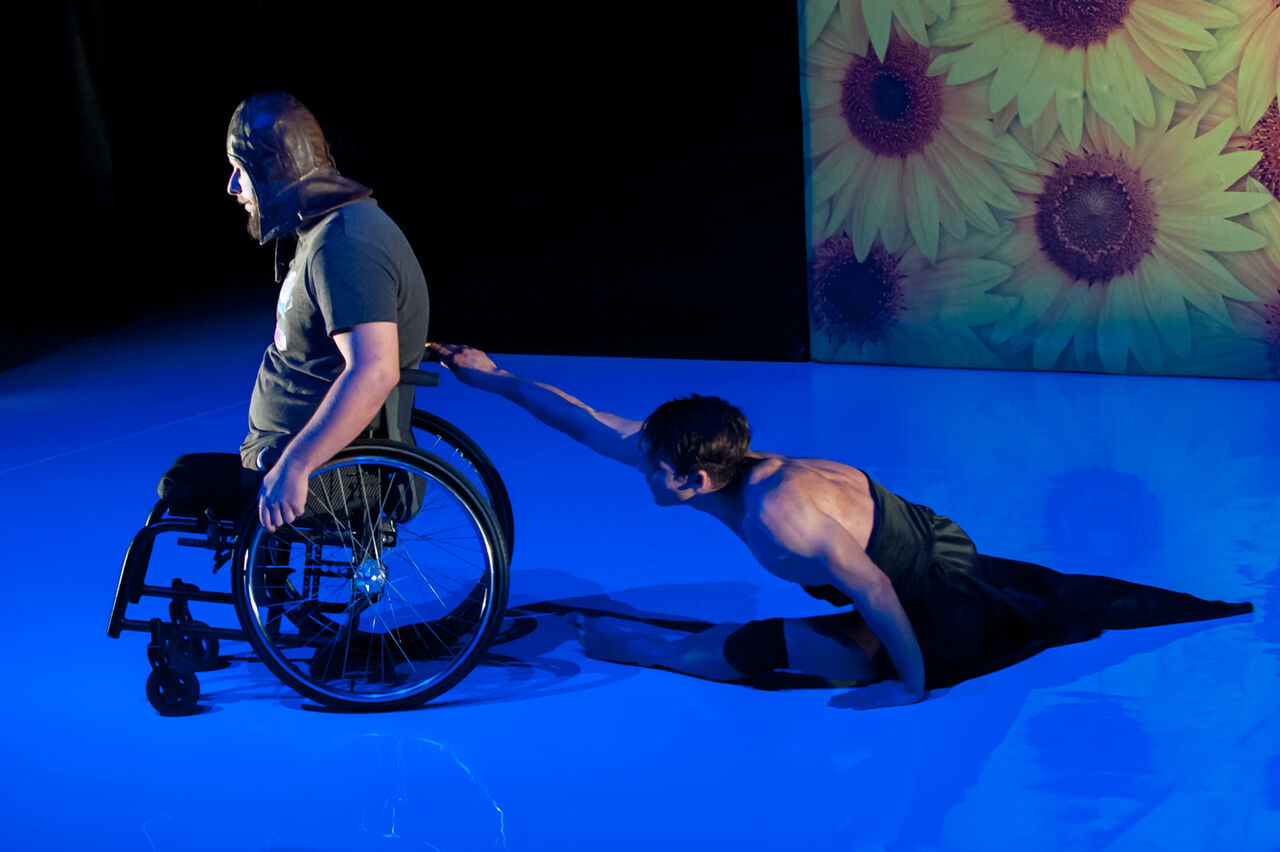Pal
Frenák: W_all / Rita Góbi: Snapdragons
Léna
Megyeri @ szinhaz.net
2019.01.08.
Within
a couple of days, Budapest’s dance enthusiasts were treated
with new productions of two choreographers with very distinct styles.
To those who know their creators, both performances delivered exactly
what they would have expected. Whether that’s a good thing is
probably up to each audience member to decide.
‘When
I get involved in something, it shows,’ says Pál
Frenák in a report about the rehearsals of his
company’s new show, W_all.
Indeed: although it was long advertised that Frenák will give
full scope to his dancers and only serve as their mentor during the
creation process, the show is not much different from his classic
pieces. By now, 61-year old Frenák has his own fanbase –
no small achievement in the world of contemporary dance. Fans expect
some artists (writers, musicians, choreographers) to always reinvent
themselves, while others they ‘only’ expect to deliver
the well-known and well-loved. Of course it depends more on the
artist than on the fans: some of them are keen to explore new ways of
expression from time to time, while others cling to their signature
style. Whether the reason for the latter is lack of inspiration or
whether these creators just do what they can do best, I guess is up
for discussion in each case.
Difference
has always been normal in Frenák’s world (Pal Frenák’s
W_all). Photo © Gergely Dobos
Once-radical
Frenák has spared his audience big surprises for a while now,
and W_all is
no exception. Although the 11 performers come with very different
backgrounds and abilities, and the list of inspirations on the show’s
bill is long and diverse, it looks much like anything Frenák
has done in the past few years. As in many of his shows, the scenery
is defined by gigantic objects: this time it’s gym-class
mattresses that can serve as walls as well. The dancers’
outfits are typical for the company too: underwear, black
suit-jackets, kneepads and stilettos. Some scenes – dancers
jumping on the mattresses, almost flying above each other; acrobatic
duets and trios with vehement physicality that verge on violence –
could have been borrowed from any of his recent works.
As
for the context behind the form, the company wanted to talk about
‘diversity seen as difference, individuality seen as
degeneration’ and question the limits of art and everyday life.
But Frenák has built his whole career on being different and
unique, and has often worked with dancers with extreme or at least
unusual physicalities. If we were shocked (and were we at all?) by a
man in a red leotard and pointe shoes dancing to Saint-Saëns’ The
Dying Swan,
by a deaf girl singing or a performer in a wheelchair, that wouldn’t
be at one of this company’s shows. Difference has always been
normal in Frenák’s world, and this time he doesn’t
even do much more than show up these unusual characters, without
giving them context or thought, which makes it hard to reflect on
them.
Still
– most walls have breaches that let some rays of light through;
and just like that, W_all
has
its own rays of light. It’s easy to be amazed by Milán
Maurer’s incredibly loose joints or his artistic swimming on
the floor and through the air (a reference to Philippe Lioret’s
movie, Welcome);
to become uncomfortable during a duet, in which Emma Lőrincz,
throwing her stilettoed feet easily to her head, is clearly an abused
woman, yet never seems weak or lost; and be puzzled by Fanni
Esterházy’s maniac and robotic solo. The scene where
amputee Tamás Kónya floats in, strapped up in the
height of his missing legs, and slow-dances with Emília
Polgár, has provoked mixed audience reactions – to me it
was just touching. These bits and pieces let the performers’
individuality shine through – but paradoxically they are mostly
shadowed by the company leader’s unmistakable touch.
Source:
https://springbackmagazine.com/read/2019/01/pal-frenak-w_all-rita-gobi-snapdragons/
